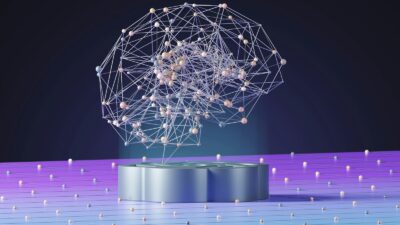TL;DR:
- Elon Musk announced the first human received a Neuralink brain implant on Sunday and is recovering well. Initial results show promising ability to detect neuron spikes in the brain.
- Neuralink aims to develop a brain chip that allows people to control devices like phones or computers just by thinking. It could help treat brain diseases or help paralyzed people regain motor function.
- The first device is called Telepathy and enables brain control of devices. Musk envisions helping people like Stephen Hawking communicate quickly just using their thoughts.
- Neuralink received FDA approval for human trials in May 2023 to evaluate safety and potential benefits for paralyzed patients. The company had previously worked through FDA concerns over implant safety.
- Neuralink faces competition from other brain interface startups but stands out for ability to implant electrodes deeper in the brain to target individual neurons. This offers greater precision.
- There are risks like infection and inflammation but potential benefits for traumatic injuries, paralysis, hearing/vision loss. The technology could eventually merge human intelligence with AI.
In a groundbreaking moment for neurotechnology, Elon Musk has announced that the first human patient received an implant from his brain interface startup Neuralink on Sunday. The patient is reportedly recovering well, while initial results show “promising neuron spike detection” from the device’s ultra-fine electrodes threaded into the brain.
This news marks a major milestone for Neuralink on its ambitious quest to develop a seamless brain-computer interface (BCI). The implant, called Telepathy, is designed to let people control external devices like a phone or computer simply by thinking. Musk envisions the technology one day helping quadriplegics to communicate quickly just with their thoughts – potentially faster than today’s speed typists.
“The first @Neuralink product is called Telepathy,” Musk shared Sunday over his social media platform Twitter (also sometimes called X). “Enables control of your phone or computer, and through them almost any device, just by thinking.”
Beyond helping patients regain abilities lost from paralysis or neurological conditions, Musk also hopes Neuralink chips could interface more intimately with our brains to augment human intelligence. The technology mogul said he envisions a future where Neuralink treats brain diseases like Parkinson’s, dementia and Alzheimer’s. He even floated the possibility that Neuralink could “extend functionality” like restoring hearing or vision.
But the most sci-fi goal? Merging the human mind with artificial intelligence, what Musk calls “symbiosis with artificial intelligence.”
How Neuralink’s Brain Implant Works
Neuralink’s coin-sized implant features slender electrodes with tiny wires thinner than a human hair. This allows the minimally invasive insertion of over 3,000 electrodes via precision surgical robots. Once implanted, the electrodes can detect electrical spikes from firing neurons in the brain – the signals that transmit our thoughts and commands to the body.
A wearable device then interprets these neural signals, translating desired actions into digital commands. Early goals are to transmit signals via Bluetooth to control smartphones, computers, or even something like a wheelchair.
The advantage Neuralink touts over older bulky brain implants is this ability to insert electrodes deeper into brain tissues. Rather than signaling from clusters or regions of neurons, it can target individual neurons for unprecedented specificity.
Patients can even use an app to customize which signals are tracked and how devices respond to different thought-commands. “It’s like upgrading your brain,” one former Neuralink employee told Bloomberg.
First In-Human Trial Approved After Initial Safety Concerns
Neuralink first sought FDA approval for human trials in 2019, but safety concerns around its surgical robot and brain electrode spurred a request for more safety testing in early 2022.
By May 2023, Neuralink won FDA approval to start its first clinical trial, called PRIME. The trial intends to evaluate safety and functionality for helping quadriplegic patients regain motor control of devices like computer cursors or smartphones. Eight patients with severe paralysis are expected to receive Neuralink implants in this first phase.
“We are pleased to see the science progressing,” an FDA spokesperson said, while cautioning that human trials often reveal new challenges not foreseen in animal testing. Rival brain interface startups like Synchron and Precision Neuroscience also aim to start human trials this year.
Animal Tests Show Promising Results, But Also Backlash
Neuralink has already demonstrated impressive results from tests of its implants in rats and monkeys. In 2021 presentations, Musk showed a macaque monkey with a Neuralink implant playing video games like Pong or shopping online – “just using its mind.”
A more recent preprint study claimed Neuralink implants allowed monkeys to mentally type at speeds up to 90 characters per minute with over 94% accuracy. For comparison, able-bodied humans type 40-60 words per minute on average.
But Neuralink’s animal experiments have also drawn criticism from neuroscientists and animal rights groups alike. An MIT Technology Review investigation in September 2023 alleged multiple macaque deaths and chronic suffering linked to haphazard surgeries and intense infection risks from implants inserted into brain tissue.
“It’s only a matter of time before a human recipient gets an infection in their brain too… and then what?” one former Neuralink scientist told the publication. While Musk said the report was “misleading,” it highlights concerns over long-term biocompatibility once implants are inserted for months or years.
The First Neuralink Brain Implant Patient Is Just The Beginning
Whatever challenges lie ahead, Neuralink’s announcement of its first human brain implant participant caps years of anticipation over whether brain interfaces can make the leap from lab to real life.
For patients suffering paralysis after injury or neurological disease, the Neuralink brain implant technology offers new reason for hope, even if still likely years away from widespread availability. Regulators remain cautious amidst great uncertainty over the permanency of risks from foreign bodies inserted into delicate brain tissue.
Yet the promise of fluid interfacing between mind and machine moves one step closer by beginning human trials. If Neualink implants function safely and reliably in the years ahead, everything from communication to transportation could be revolutionized for people robbed of traditional physical control.
Groundbreaking moment in neurotech - @Neuralink just announced its first human patient received a brain implant. #BCI #Neurotechnology #Neuralink #BrainComputerInterface #Telepathy Share on X





















 SNL Brutally Spoofs the Stanley Cup Craze with “Big Dumb Cups”
SNL Brutally Spoofs the Stanley Cup Craze with “Big Dumb Cups”
Leave a Reply